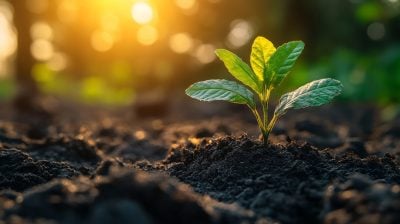David Crabb, the Sales and Distribution Manager for Caterpillar’s Large Electric Power group, gives his perspective on the ways in which the company and its dealer network are addressing the rapidly evolving needs of the African market.
How is Africa unique in its needs for power?
The first thing that comes to mind is the rapidly expanding population.
According to the latest estimates from the United Nations, the population
of Africa will rise from about 1bn today to approximately 4bn by the end of this century.
The next characteristic that makes Africa unique is the low per-capita consumption of electricity, which is about 15% of the global average, according to the Organisation for Economic Co-operation and Development (OECD). Starting from this low base, improved electrification in
rural areas, as well as the increased affordability of electricity, will lead to a rapid increase in consumption.
Finally, access to finance is a significant factor. The shift from centralised power plants to distributed generation will lead to faster decisions about investments and an increased flow of foreign investment, which will help customers improve profitability.
Investments will be timed with the actual power need, reducing the upfront capital expenditure. Recent large photovoltaic (PV) projects in the region show a lower levelised cost of energy than traditional power plants.
Africa has demonstrated an ability to change quickly; the transition to mobile phone infrastructure – bypassing the use of fixed land lines – for
example. Distributed renewable energy has the potential to have a greater impact on the daily lives of Africans.
While the scale of change in Africa is unique, it also shares the need of the rest of the world for stable, reliable and timely power as a key for economic growth, safety and security.
How is Caterpillar uniquely positioned to serve customers in the African market?
Caterpillar has a long history in Africa, and we have grown as our
African customers have grown. We have adapted our product offerings to cope with the fuel, heat, humidity, dust and other extremes.
Moving forward, we face the challenge of integrating distributed generation and new technologies with traditional power grids, and it will be critical for us to ensure the delivery of reliable power for the African economy during this rapid expansion.
Our broad product portfolio and global perspective, combined with the local expertise of the Cat dealer network, are key advantages for
Caterpillar. We can tap our company’s collective knowledge on any particular industry application and then design the optimal solution.
With a full range of diesel, gas, dual-fuel and hybrid power solutions, we can offer customers a transparent comparison of technologies. And by combining existing or new power plants with the Cat Microgrid Master controller (MMC) or Cat Energy Storage System (ESS), we support reduced fuel consumption and supply costs, grid stability, power quality and other benefits – all while ensuring
reliable power.
Can you give an example of a solution that uses a mix of power technologies?
B2Gold Corp began operations at the Otjikoto Mine in central Namibia in 2015. Four Cat® CM32 generator sets that run on heavy fuel oil supply primary power for operations, with standby power provided by three Cat 3516 diesel generator sets. While delivering exceptional availability, the reliance on power produced from fossil fuels makes the profitability of the mine vulnerable to fuel price fluctuations and supply interruptions.
Caterpillar and Barloworld, the Cat dealer for Southern Africa, designed an integrated hybrid system that not only generates power while the sun shines but also maintains a consistent flow of power for the mine’s
operations in cloudy conditions and at night.
The 7MW solar facility at Otjikoto includes 62,400 Cat thin-film PVT
modules mounted on single-axis trackers, 260 solar inverters, seven 1MW transformers and the Cat Microgrid Master Controller (MMC).
By converting the mine’s power-producing capabilities to a solar
hybrid, company officials estimate a reduction in HFO consumption of about 3.4m litres per year, which results in an annual savings of 14%-16% in the cost of power generation.
How is big data changing the power solutions business?
Big data and connectivity allow power plant owners to have a true, real-time picture of the performance of their assets that was not always available in the past. For customers running generators set for prime power, the aggregated data can be used to predict failure, monitor fuel consumption and reduce any unplanned downtime. Meanwhile, customers using generator sets for emergency backup can know their power plants are ready to run at a second’s notice.
Today, Caterpillar has hundreds of thousands of assets connected globally through Cat Connect, which leverages technology and learning across our construction, mining, and energy and transportation divisions.
Cat Connect is available to all of our electric power customers, large and small, and can be used beyond generator sets to include renewable energy applications and energy storage. Customers can visualise data on performance and receive alerts and reports from anywhere in the world through an easy-to-use interface. I would recommend customers
contact their local Caterpillar dealer for a free demonstration or webinar to fully understand the possibilities.
What’s next for Caterpillar in Africa?
Caterpillar is 100% committed to our customers in Africa. We’re heavily
invested in African communities, where Caterpillar and our dealers
employ approximately 15,000 people.
In 2016, Caterpillar, our dealers and the Caterpillar Foundation
announced a plan to invest more than $1bn in countries throughout Africa over a five-year period.
This investment includes enhanced parts distribution capacity, new state-of-the-art Certified Rebuild Centres, new dealer branch locations, the expansion of Caterpillar’s Technicians for Africa online skills development programme, and millions of dollars to support programmes that lift people out of poverty.
Ultimately, we’re excited about the long-term investments we’re making in Africa that are helping to build, develop and power communities.
Want to continue reading? Subscribe today.
You've read all your free articles for this month! Subscribe now to enjoy full access to our content.
Digital Monthly
£8.00 / month
Receive full unlimited access to our articles, opinions, podcasts and more.
Digital Yearly
£70.00 / year
Our best value offer - save £26 and gain access to all of our digital content for an entire year!

 Sign in with Google
Sign in with Google 





